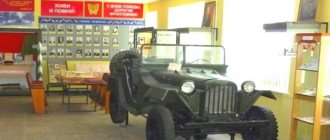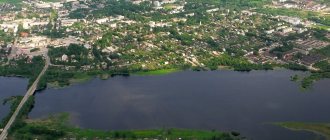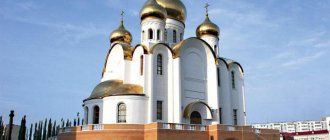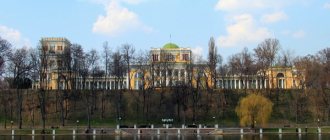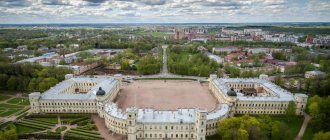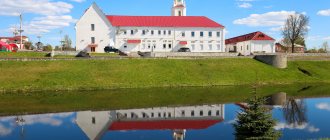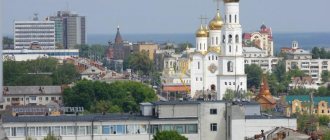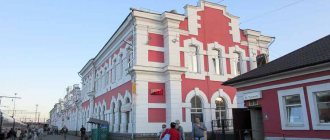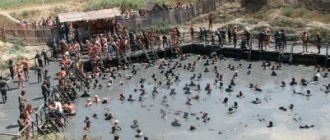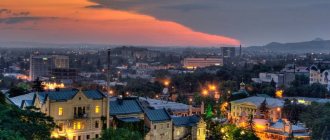History of the formation of Penza
To protect the territory of the Russian state from external enemies, in 1663, at the direction of the second Russian Tsar from the Romanov dynasty, Alexei Mikhailovich the Quiet, a governor arrived on the Penza River with a hundred Circassian Cossacks to build a fortress. The plan for the defensive structure was developed by Lieutenant Colonel Osip Zumerovsky. The latter continued to lead the construction.
The total length of the Kremlin’s defensive walls was more than 950 meters, and a settlement of people called upon to perform military or administrative service grew around them. Responsibilities for creating a settlement nearby were assigned to the first Penza governor Elisey Lachiny.
At that time, the established settlement numbered approximately 3,300 people. The fortress was attacked several times, but the city was not conquered.
In gratitude for the protection of Russia's borders on the southeastern side, the Tsar presented Penza with an icon of the Kazan Mother of God. It has survived to this day and is now the main shrine of the city among the Orthodox.
In the middle of the 18th century, the Kremlin ceased to fulfill its strategic function. And after some time, the region became one of the largest in Russia in the production of agricultural products.
In 1801, Penza received city status. Then it became the main city of the Penza district.
From this year, the city infrastructure begins to develop, educational and cultural institutions, industrial and agricultural enterprises are created.
Where is the city of Penza? We'll talk about this in more detail below. Now Penza is a regional cultural center of the Russian Federation with a developed industry, where 530 thousand indigenous people live on an area of 305 km².
The city tourist office organizes daily walking tours for tourists to the main historical sites of the city.
Museum-Estate of V. Belinsky
In the Penza region in the city of Belinsky (18 km from the Tarkhany nature reserve) there is a museum-estate of the Russian critic and writer Vissarion Belinsky. Initially, on the initiative of N. Krupskaya, in 1938, a museum was created in the house where the publicist’s family lived.
In 1942, the exhibitions were moved to the building of the former district school. And in 1969, the house-museum was converted into the Belinsky museum-estate. Now tourists can explore the museum, the house of the former merchant F. Antyushin and the housing of the Belinsky family, which is a one-story wooden structure made of wood of different species.
In the family house, which consists of seven rooms, there are household items, personal belongings, and books from a personal library. There are also authentic documents related to the writer’s creative activity. In Antyushin's house, tourists can get acquainted with the life and work of Belinsky in Moscow and St. Petersburg.
Where is?
Where is the city of Penza? The city is located on the Volga Upland in the central part of Russia. Penza is located 629 km southeast of the Russian capital.
The city coordinates are as follows:
- Latitude: 53°12.0396′ N. w.
- Longitude: 45°0.2784′E. d.
The region borders on the following regions: Saratov (in the south), Ryazan (in the north-west), Tambov (in the west), Ulyanovsk (in the east), and the Republic of Mordovia (in the north).
The following cities are located near Penza (distance is indicated in parentheses):
- Sursk (47 km).
- Kuznetsk (107 km).
- Zarechny (363 km).
- Kamenka (258 km).
- Serdobsk (98 km).
- Nizhny Lomov (95 km).
- Nikolsk (91 km).
- Belinsky (109 km).
- Gorodishche (47 km).
- Spassk-Ryazansky (332 km).
Cathedral
On the central alley of the Mironositsky cemetery there is the Assumption Cathedral. In 1836, there was a wooden church on this site. 63 years later, during a city fire, it burned down. And in 1905, on the foundation of the burnt temple, a stone cathedral with three altars was built.
In 1937 the cathedral was closed, and for eight years it housed army warehouses. From 1945 to the present time, liturgies and church services have been held in the cathedral. They can be attended by tourists and city guests. Since 2000, a Christian school for children and adults and theological educational courses have been operating on the territory of the Cathedral.
"Tarkhany"
In the Belinsky district there is the Tarkhany museum-reserve (110 km from Penza). Land ownership with a landed estate in the village of Tarkhany at the end of the 18th century was bought by the grandfather of the future poet M. Lermontov, Mikhail Arsenyev.
In 1818, two churches, a chapel, a family crypt and a manor house were built, in which the Russian poet spent his childhood. In 1908, the estate burned down in a fire. And after the revolution, a horse breeding farm was located on the estate.
In 1936, restoration and restoration work began, which was completed three years later. Then Tarkhany was officially renamed the village of Lermontovo, where the state Lermontov Museum-Reserve “Tarkhany” is located to this day. Tourists can explore the architectural structures, which consist of two complexes.
The first complex includes a manor house, a church and two manor buildings where the courtyard peasants of that time lived. In the second part of the reserve there is the Arsenyev-Lermontov family crypt, where the poet’s ashes, transported from Pyatigorsk in 1842, and the Church of the Archangel Michael are now located.
Since 1971, on the first Sunday of July, the Lermontov Poetry Festival, dedicated to the memory of the literary figure, has been held in Tarkhany. On this day, the leadership of Penza organizes special bus routes from the city center to Lermontovo for residents and their guests.
Trinity Convent
We already know where Penza is. But there are still some sights to consider. For example, tourists are wondering where the convent is located in Penza? In the old part of the city it is located on Kirov Street. Its history begins in 1689.
At that time, the priest of the city Nativity Church gave a manor plot for the construction of women's housing to those who suffered from the raids of nomads on the territory of the Penza region.
After some time, two more estate plots were annexed to the first estate. Their total area was 10,500 m2. It was decided to build a convent and two churches on it.
In 1746, on the site of wooden church buildings, a stone Trinity Church was erected and consecrated in the name of the Smolensk Icon of the Mother of God, and the monastery officially became known as the “Trinity Convent”.
Now tourists have the opportunity to explore two operating stone churches and attend church services. There is a children's Sunday school on the territory of the monastery. There is also a church library here.
Tambov outpost
If you are interested in the historical sights of Penza, then pay attention to the Tambov outpost. We will talk about it further. On Tambovskaya Street there is a structure consisting of two small stone columns, between which there is a barrier. They stand on the spot where the dirt post road between Penza and Tambov began in the 17th-18th centuries.
The observation fortified point (outpost) ceased to fulfill its functions at the beginning of the 19th century. Then the building was dismantled. In 1972, the historical outpost was restored. At one time, Russian Emperors Nicholas I, Nicholas II and other historical figures of the empire passed through it to Penza.
Pokrovsky Bishops' Cathedral
Where is the bishop's cathedral located in the city of Penza? On Chkalova Street. Tourists pay attention to the beautiful religious building, which is called the Penza Intercession Bishops' Cathedral.
The first wooden temple structure was built after the formation of the city itself in the Starodragun settlement, in which a voluntary equestrian Cossack squad was formed (now this is the area of Kalinin Street).
In 1680 the temple was burned, but 7 years later it was restored. At that time, the Vladimirov Icon of the Mother of God was preserved in the church, in honor of which another church building was erected nearby.
In 1765, a stone temple was built on the site of these two wooden churches. It has survived to this day. In 1931, city authorities banned church services. Then the temple was closed, and the premises housed a cinema for a long time.
After 58 years, the building was returned to the Penza church leadership. Restoration work began in 1990. In 1998, the cathedral was consecrated, and daily church services began on October 14.
Museum of Performing Arts
On Volodarsky Street there is a museum of performing arts named after Vsevolod Meyerhold. This is another attraction of Penza. The wooden building was built in 1881 by the father of the future Russian and Soviet director Emil Meyerhold, a merchant of the second guild and the owner of a vodka enterprise, which was located opposite the house.
According to church registry documents, Vsevolod Meyerhold (real name Karl Kazimir Theodor Meyerhold) was born in this house on February 9, 1874. He later became an outstanding theater figure of the 20th century.
Now in this family house, since 1984, there has been a museum where the interior of the family’s life and original documents related to the creative activity of the great director have been restored.
Toy railway
Penza Children's Railway, located on the outskirts of the city near the village of Sosnovka, is one of the main attractions. Since 1985, the educational and entertainment children's complex has become a favorite vacation spot for Penza children and city guests.
The length of the ring road is 1.5 km and runs through a forest area where two intermediate stations are located - Pionerskaya and Sosnovka. A special feature is that this narrow-gauge railway is operated by children under the guidance of railway mentors.
The city of Sputnik and its attractions
Where is Sputnik located in Penza? In the southern part of the city there is the Pervomaisky district (an area of more than 50 km²). It was created in 1979 by annexing several villages located near Penza.
Once upon a time there was a large field and a sand quarry on this site. For 10 years, under the leadership of the regional leadership, construction work was carried out and urban infrastructure was created.
Now this territory is considered a city within a city, where more than 20 thousand people live (area - 275 hectares). Residential areas, kindergartens, schools and other city institutions have been created here. The main attractions are the embankment, located on the shore of an artificial lake, and the light and sound fountain built in 2014.
This attraction consists of a complex of three fountains that are controlled by a computer system. In the evening, thanks to the lighting, which changes to the beat of the music, it looks especially attractive. The building is located on Naberezhny Boulevard and is a popular vacation spot for residents and guests of the city of Sputnik.
Art Gallery named after K. Savitsky
What to see in Penza? As guests of the city note, there are many attractions. Art lovers can visit the state art gallery. Its building, according to travelers, is conveniently located in the city center. The exhibition was based on paintings donated to the city by the governor of the Penza province Nikolai Seliverstov in 1892.
At that time, the collection of paintings was called “Seliverstov Picture Gallery”; the collection was exhibited for public viewing in the building of the Aleksandrovsky orphanage. In 1897, a drawing school building was built in the city. A museum of paintings was placed there and the first director was a full member of the Imperial Academy of Arts, Konstantin Savitsky. Now the regional art gallery consists of works of art of the 17th-20th centuries and contemporary Penza artists.
Travel agencies, in addition to walking tours of the city, organize group bus trips to the sights of Penza and the Penza region. An excursion to the Tarkhany Museum-Reserve and to the estate of V. Belinsky is very popular.
How to get to Penza?
Where is Penza located? We have already found this out. How to get to the city from Moscow? Depending on your financial capabilities, you can get to Penza by choosing one of three options.
You can use the services of airlines. Planes depart from Domodedovo and Vnukovo and land at Bolshoye Savino International Airport 1.5 hours later. The ticket price is approximately 7,000 rubles.
The Moscow-Orsk and Moscow-Penza trains arrive at the main railway station of Penza.
Trains depart from Kazansky station. And they arrive in Penza in 14-15 hours. The ticket price will cost 1,150 rubles (reserved seat) or 1,810 rubles (compartment).
In Moscow, three bus stations (Kazansky, Shchelkovsky, South Gate) send long-distance buses from Moscow to Penza. Travel time is approximately 14-15 hours. Ticket price starts from 1200 rubles.
Victoria Bonya
View this post on Instagram
Posted by Victoria Bonya (@victoriabonya) Jun 8, 2021 at 9:40 am PDT
Victoria managed to work as a promoter, waitress and secretary before becoming famous throughout Russia. The girl moved to the capital at the age of 16; before that she lived in the Trans-Baikal city of Krasnokamensk.
Bonya knows how difficult it is for provincial girls in Moscow. She believes that her desire for change and a positive attitude helped her achieve success, so she advises residents of distant regions not to be discouraged, but to take advantage of every chance.
